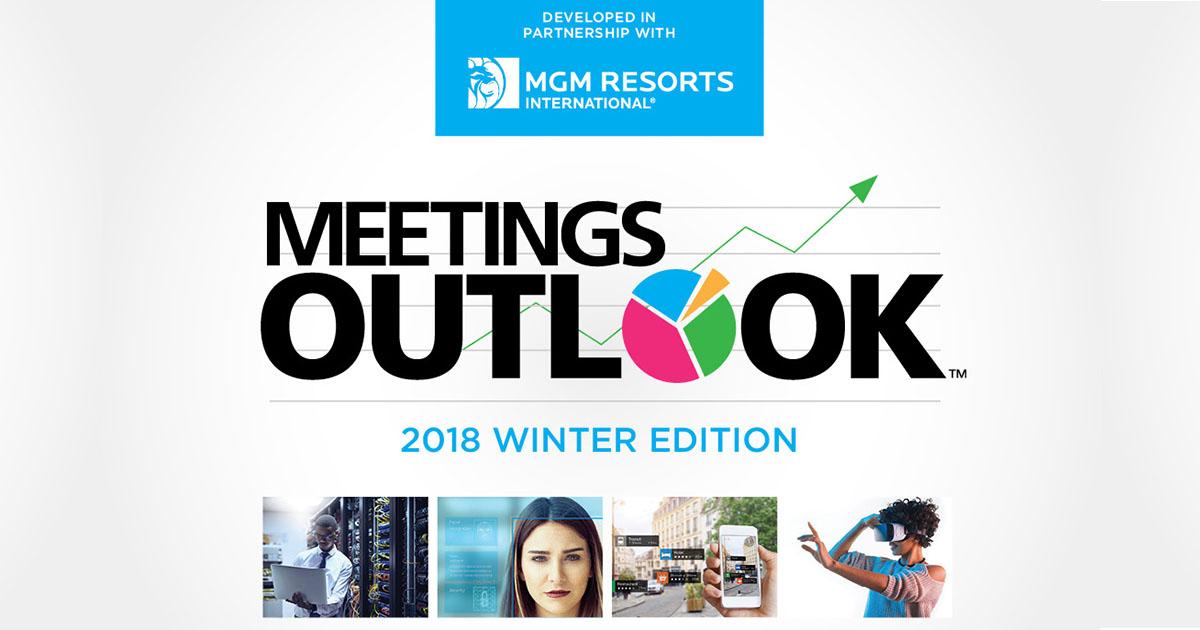Attorney Michele S. Katz is sold on the value of personalization technology at meetings. “It really warms the room,” she says. In October, she used a badge technology called Proxfinity at a networking event for about 100 people that her firm, Advítam IP, ran with sponsor Amata, a shared workspace environment in Chicago.
When participants at the gathering came into close proximity of someone else that the meeting organizers had identified as having complimentary interests, both people’s initials lit up on their badges. Katz found that this feature made it easy for attendees to start a conversation about what brought them together and build a lasting connection.
“The element of personalization, with meaningful conversations, allows you to have better targeted follow-up,” adds Katz, who has also used the technology at a larger meeting of 300 people for the National Association of Women Business Owners in Chicago.
Katz isn’t alone in embracing personalization technology at meetings. MPI’s latest Meetings Outlook survey found there was a significant focus on planners personalizing the user experience through technology such as virtual reality (VR), augmented reality (AR), facial recognition, short-throw projection and beacons. “The use of beacons to monitor exhibit traffic will change the landscape of exhibit sales and follow-up,” wrote one planner who requested anonymity.
When asked which technologies are taking precedence, respondents overwhelmingly cited apps, mentioned by nearly 28 percent of respondents. “The use of meeting apps is changing how meetings happen,” wrote the same planner who pointed to the use of beacons.
Whether apps are event-specific or not, the Meetings Outlook survey found they are being used to reduce paper usage, improve communications, facilitate networking, speed registration and improve attendee safety. Linda Nelson, CMP (MPI Carolinas Chapter), owner of To PLAN Ahead, a full-service meeting planning firm in Asheville, N.C., pointed to “more robust registration software that allows for speaker management, which is a huge bonus, since this is a very time-intensive process.”
Other technologies viewed as particularly important were automated registration (17.4 percent) and social media marketing and communications, AR/VR and data collection and mining (all cited by 9.3 percent).
As Tyra Hilliard, CMP (MPI North Florida Chapter), a St. Simons Island, Ga.-based attorney and educator, noted in her survey response, “Self-check-in kiosks at conferences are streamlining the process and reducing the need for so many staff/volunteers.”
The overriding goal in using such technologies, the research found, is often to create opportunities for novel and personal experiences for attendees.
At one meeting planner’s organization, for instance, a whole day of a national convention will be dedicated to letting participants choose their own adventure, based on their interests.
“We are also looking at how technology can be used throughout the event to connect with other participants without replacing the human connection piece of the event,” wrote a planner who requested anonymity.
Incorporating personalization technology successfully starts long before the event, with early engagement, and continues to novel onsite experiences tailored for each attendee and meaningful follow-up after the event.
While some meeting professionals are adopting very advanced new tools others have found that more familiar tools, such as social media and apps, can be used to enhance sessions to make them more personal and community-oriented.
“Real-time polling apps are increasingly being utilized in business/corporate events,” wrote Corinne Melissari (MPI Potomac Chapter), a planner from the Association of State and Territorial Health Officials in the Washington, D.C., metro area.
The personalization trend extends to data collection, including information gathering through apps. This process includes many components: analyzing data from event attendees, looking at their personal needs and wants, studying their real-time responses to event experiences and understanding details such as grouping and walking patterns within venues.
As Hilliard pointed out in her response, “RFID and similar technologies are allowing for better tracking of attendees, which translates to a more accurate history.”
Eric Mottard (MPI Spain Chapter), CEO of eventoplus, the Barcelona-based media partner of major trade shows in Europe, reported a trend toward the use of technology in generating data and audience intelligence and to “facilitate networking in the event, and also before and after” in his survey response.
Many respondents seem ready to try new technologies as the prices come down. In the survey, meeting professionals said they are looking forward to the advent of affordable and easy-to-use beacon (iBeacon) technology and/or RFID to collect data about attendee preferences and behaviors, and to push relevant communications to attendees on site.
“We are evaluating tools like VR for our events, looking at options like the Oculus Rift,” Bob Clary, director of marketing at education technology firm DevelopIntelligence in Lafayette, Colo., said in an email. “At this point, I think prices are just on the edge of affordability, but will be there soon.” (In the past year, the cost for the Oculus Rift hardware, as well as the powerful graphics cards necessary for the VR system to operate properly on a PC, has dropped significantly. Keep in mind that this is just the first high-end, consumer-ready version of VR equipment).
The challenge for many is finding a way to bring new technology to meetings in a manner that does not distract people from making human connections.
Ask Donna Mangold (MPI Pittsburgh Chapter), who is involved in planning investment seminars and conferences for Federated Investors, a mutual fund organization based in Pittsburgh, as well as the firm’s presence at trade shows. Federated Investors has created apps for sales reps that attend an internal conference, but Mangold has reservations about how much technology is being used in some meetings.
“I think that meetings have become so tech-oriented that the personal contact isn’t there anymore,” she says. “You see people walking around looking at their phones continually, even during sessions. They’ll be on their phones or iPads, and I know they are not following what is going on in the room.”
Meetings Outlook is developed in partnership with MGM Resorts. Meetings Outlook is supported in partnership with IMEX Group. Research conducted by Association Insights.



